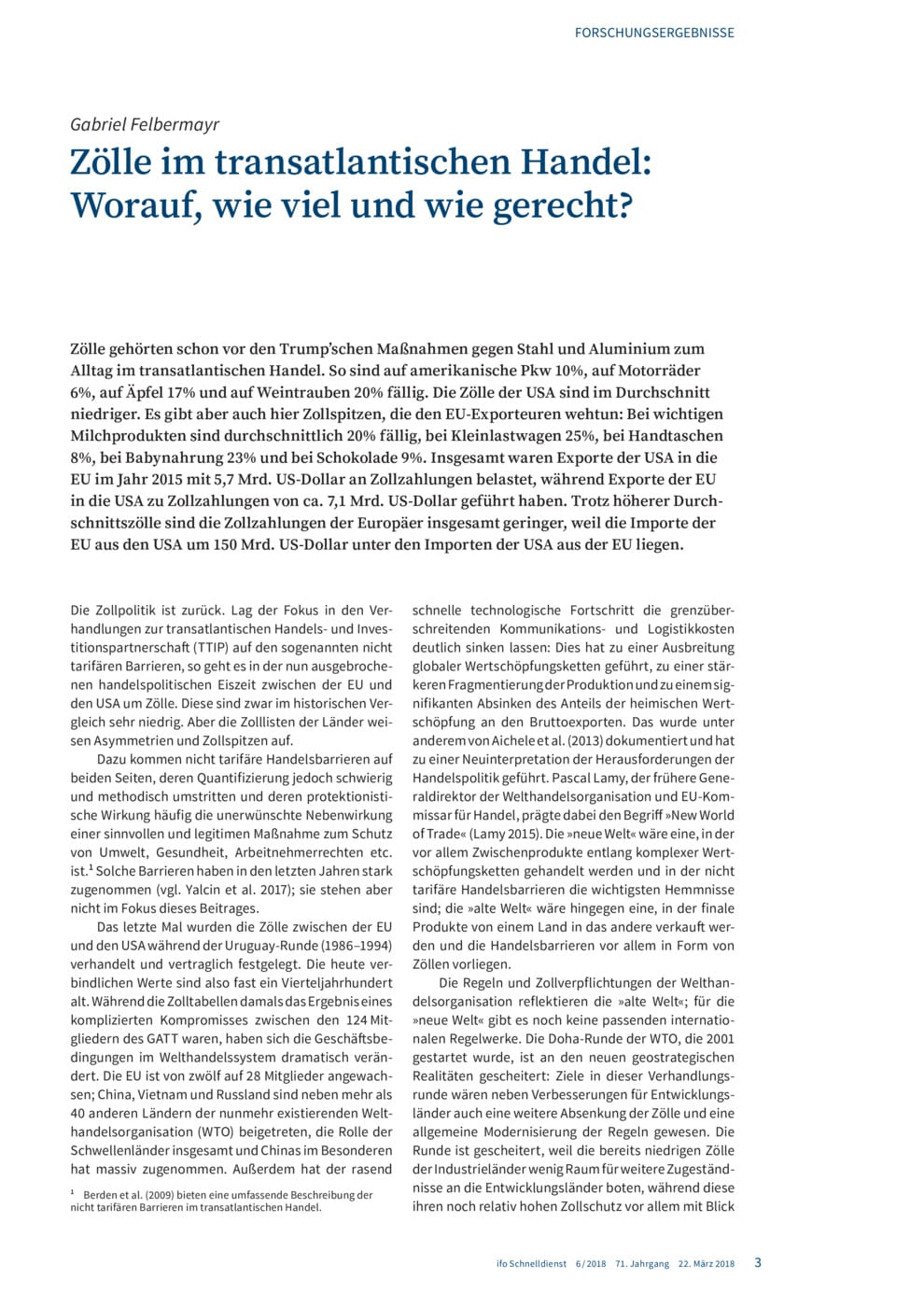Tariffs in Transatlantic Trade: On What, How Much and How Fair?
ifo Institut, München, 2018
ifo Schnelldienst, 2018, 71, Nr. 06, 24–29

Although tariffs were on the agenda in transatlantic trade even before the recent measures against steel and aluminium announced by President Trump, the focus in the negotiations on the transatlantic trade and investment partnership was on so-called non-tariff barriers. Now tariff policy has returned. Tariffs are very low by historical standards, but countries’ tariff lists show asymmetries and tariff peaks. For example, tariffs imposed on American cars amount to 10%, on motorcycles 6%, on apples 17% and on grapes 20%. US tariffs are lower, on average – the EU’s unweighted average tariff is 5.2% and that of the US 3.5%. But here too there are also tariff peaks. For important dairy products, a tariff of 20% is imposed, on average, as well as 25% for small trucks and 8% for handbags. Despite higher average tariffs, Europeans’ tariff payments are lower overall because EU imports from the US are $150 billion lower than US imports from the EU. The EU is thus by no means an Eldorado of free trade, especially in comparison with the US. It is time to give consideration to a general reduction of remaining tariffs worldwide. An adjustment downwards would be much better than an upward adjustment of tariff policy.